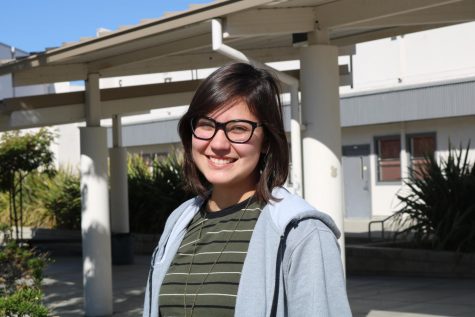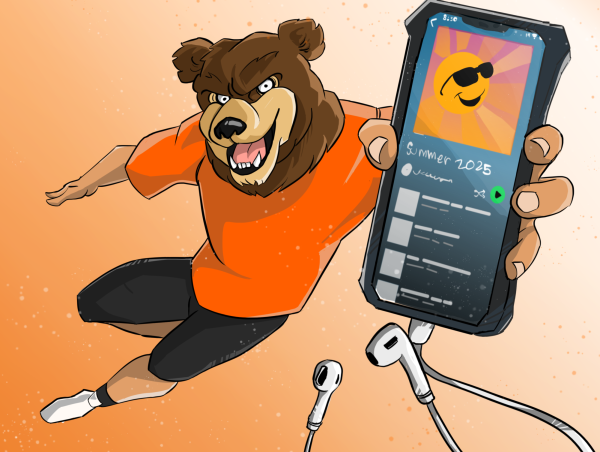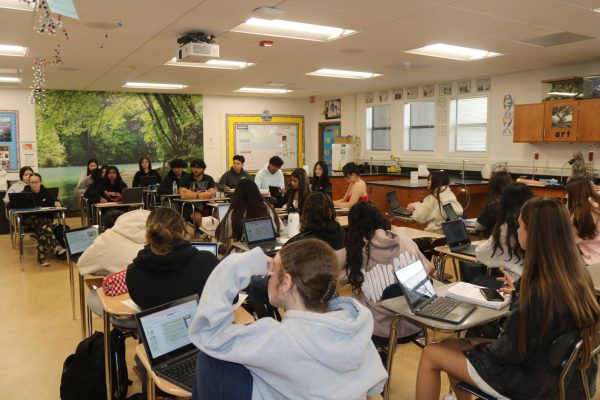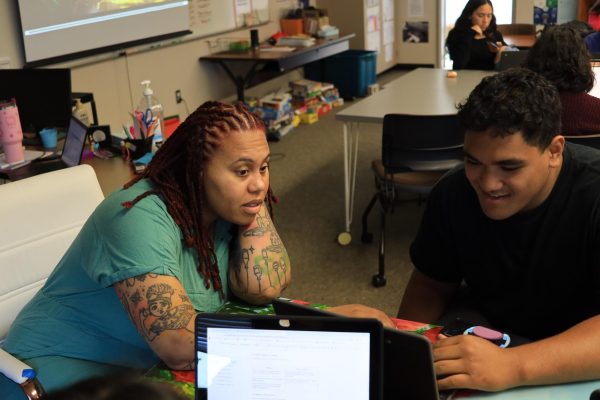Get ready to roll for initiative with Cal High’s nerdiest teachers
Action figures are scattered on a large desk and across the windowsill. Posters decorate the walls with artwork of literary references and fantasy. A Harry Potter mug resides on the desk as well, containing pens in a variety of colors.
As soon as students walk into English teacher Devan Manning’s third-floor classroom, they know that they’ve entered the realm of nerdiness.
“I have a lot of nerdy students. I’m a nerd, too. I want [the class] to be a safe space for nerdiness and geekery,” said Manning.
In her classroom, Manning incorporates the popular tabletop role-playing game, Dungeons and Dragons, into her freshman mythology unit. Students are assigned a deity from worldwide mythology and create a character sheet based off of that god or goddess. After creating the sheet, the students bring it to class and spar against their classmates.
The game is referred to as ‘Friday Fight Nights’ and has received a lot of positive feedback from students.
“I think other people can enjoy it,” said freshman Nick Harvey, an experienced D&D player. “Games are a fun way to learn even if the topic isn’t fun.”
Different students feel the project resonate with them in different ways, whether it entertains them or helps them feel more connected to their culture.
“It’ll be fun to learn about the gods my Greek ancestors believed in,” said freshman John Simos, hoping to create a sheet for either Athena or Zeus.
Although some students may be experienced D&D players, that doesn’t necessarily mean they have an advantage.
“It doesn’t matter how good you are,” Manning said. “You still have to roll dice.”
As many avid players know, an unfortunate roll can ruin an entire session no matter how foolproof it may seem. In fact, dice are so important that Manning owns a pin of a 20-sided die on her lanyard.
When inquired about it, Manning laughed and said, “I read a post saying that all English teachers are either chaotic good or lawful evil. I want my students to know I’m chaotic good.”
“Chaotic good” and “lawful evil” refer to moral alignments for D&D characters. A character that is ‘lawful’ refers to a clear sense of morals, while a ‘chaotic’ character is a loose cannon who isn’t afraid to bend rules and even tend to toss them out the window.
Manning demonstrate her flexibility and good-hearted nature to her students Manning certainly feels that there has been a blend of pop culture and nerd culture. This change has created positivity but also its fair share of issues, such as gatekeeping, which is when people attempt to control who can identify as what. In this case, it controls who can be considered a “real nerd.”
“I’ve noticed a lot of gatekeeping recently, which really frustrates me,” Manning said. “A lot of girls have experienced it.”
Although this is an issue, she is glad that she can express her personal interests with interactive activities for her students.
Other teachers also enjoy this approach to teaching and feel that it helps them connect with their students.
Math teacher Bob Allen is also a D&D fan. Although he doesn’t include the game in his lessons, he does have an impressive collection of dice.
He even created a Kickstarter to fund his collection.
Allen has other nerdy interests, such as Marvel movies and Monty Python. There are Marvel movie posters on his walls and various action figures above his projector screen and scattered on his desk.
He also takes time during class to show a new Marvel movie trailer, or a clip from Monty Python that he insists is related to geometry.
An example of this is the classic Monty Python “Argument Clinic” scene, where a man enters a clinic seeking a debate and realizes that the conflict between him and his ‘doctor’ is simply banter without substance.
Allen uses this as an example of geometric proofs. This clip teaches that without proofs, a geometric law has no evidence of being true.
Students generally enjoy these short clips since they give them a chance to relax for a few minutes from mathematical concepts.
“It’s always fun to nerd out with him and talk about superheroes,” Jon Latiolais said.
Allen agrees with Manning in the sense that nerd culture has definitely become integrated with pop culture. He believes that social media is the main reason for this.
“The internet has made it easier to find people with the same interests,” Allen said. “More people know who Doctor Who is than I was growing up.”
The sense of community between nerds has extended beyond the relationships of students and their peers. Now, a student can enter a classroom and feel their teacher can relate to them and their interests, causing them to feel more comfortable in class.
Combining these hobbies with educational activities makes teachers more engaging for not only nerds, but for students with a variety of other interests.
After all, who doesn’t enjoy games involving dragons and comedy?




